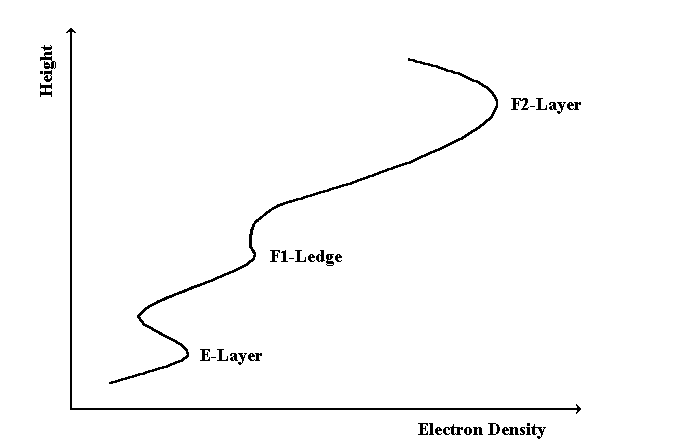|
An ionogram trace does not indicate the true variation of electron concentration with
height due to the retarding effect of the electrons on the radio wave as it passes
through (see Hargreaves (1992) for details). The ionogram "virtual heights"
(or more correctly, "virtual ranges" as the echoes do not necessarily come from
directly overhead) are always an over-estimate of the true echoing range.
|
|
It is possible to estimate the true electron concentration profile from an
ionogram using computer programmes such as POLAN (POLynomial ANalysis, see
Titheridge, 1985, 1986, and AIS software section). However, several assumptions
are necessary, and often a unique profile cannot be calculated.
|

Click on the image for a better view |
| |
|
The picture shows a typical true profile illustrating distinct peaks in the
E-layer and F-layer (the F2 peak is defined as the largest overall concentration
in the F-layer) and an inflection point, or ledge, in the lower F-region (F1).
[The nominal letters associated with each layer are historic but commonly used -
they were chosen to allow for the possible discovery of additional layers at
higher or lower altitudes].
There is also a fourth layer known as the D-region (a region rather than a
layer as it is not so well defined) that exists below the E-Layer. The D-region
has a relatively small ionised component compared to the F-region, but the
denser concentration of neutral particles at the lower altitude cause the
energy of radio waves to be more easily absorbed. The tendency to strongly
absorb radio waves means that echoes are rarely seen from the D-region and
echoes from the higher layers may also be absorbed.
|